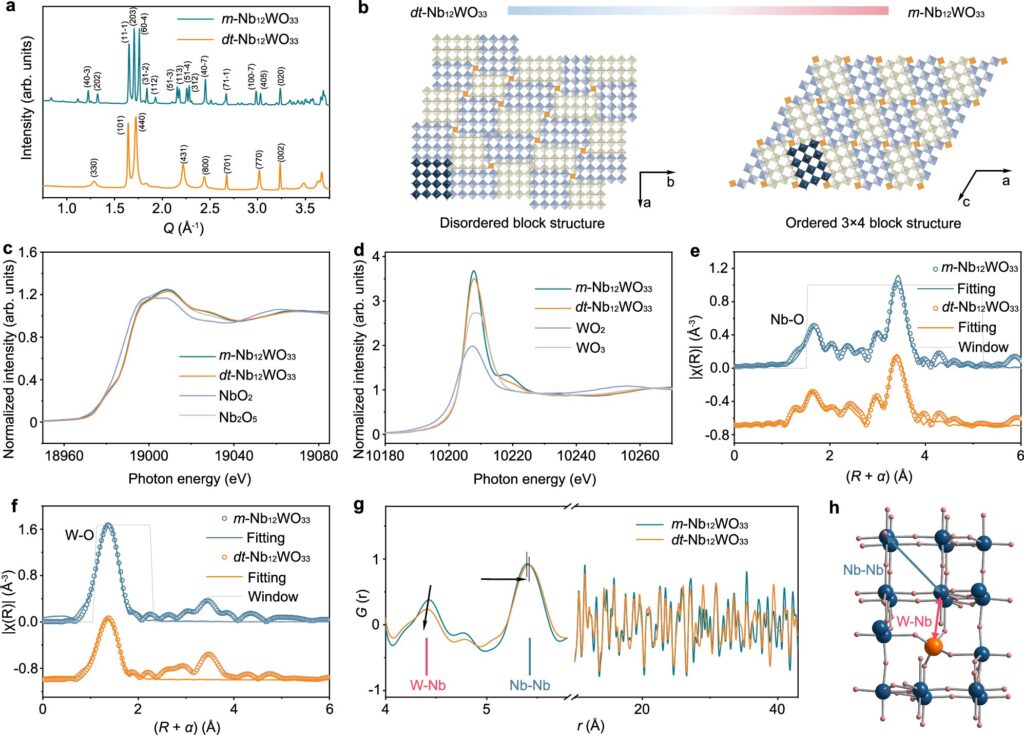Led by Prof. Dr. Nicola Pinna and Dr. Patrícia Russo from the Department of Chemistry at Humboldt-Universität zu Berlin (HU), scientists have succeeded in disrupting the atomic order of batteries in a targeted manner. The result: high-performance anodes for lithium and sodium-ion batteries with exceptional high charging speed and stability—a decisive step toward safer and longer-lasting energy storage systems.
Imperfection as a tool in material design
Traditional battery materials rely on highly ordered crystal structures to provide predictable pathways for ion transport. However, such perfection often comes at the cost of structural rigidity, limited ion mobility, and poor performance at high charge rates.
In two studies, one published in Nature Communications and the other in Advanced Materials, the researchers managed to flip the paradigm: Their research shows that targeted disorder—not order—can enhance ionic conductivity, increase cycling stability, and unlock novel storage mechanisms of batteries.
By shifting away from the conventional design rules, the team’s approach could redefine material design strategies across the field. “Our results show that targeted imperfection can be a powerful tool in material design,” says Professor Pinna. Dr. Russo added, “By deliberately breaking the atomic order, we are opening up completely new avenues for more powerful, longer-lasting and therefore more sustainable high-performance batteries.”
New perspectives for electric cars, data storage and battery technology
The team has developed new materials for more powerful and longer-lasting batteries through structural disorder in niobium-tungsten oxides and controlled amorphization—this describes the transition of the material to a disordered state—in iron niobate.
A particularly durable material has been produced for lithium-ion batteries. Even after 1,000 charging cycles, a large proportion of the original performance is retained. A new type of material has also been developed for sodium-ion batteries, a more environmentally friendly alternative. It changes significantly when first charged, but retains important structures. This results in a very high storage capacity and a long service life of more than 2,600 charging cycles with almost the same performance.
The combination of disordered lithium anodes and amorphous sodium anodes opens up new perspectives for ultra-fast-charging electric vehicles, stationary storage solutions for renewable energies and safe alternatives to previous battery technologies. The studies underline the potential of atomic design principles to solve global energy problems.
More information:
Yanchen Liu et al, A partially disordered crystallographic shear block structure as fast-charging negative electrode material for lithium-ion batteries, Nature Communications (2025). DOI: 10.1038/s41467-025-61646-9
Yanchen Liu et al, FeNb2O6 as a High-Performance Anode for Sodium-Ion Batteries Enabled by Structural Amorphization Coupled with NbO6 Local Ordering, Advanced Materials (2025). DOI: 10.1002/adma.202504100 advanced.onlinelibrary.wiley.c … .1002/adma.202504100
Citation:
Targeted atomic disorder boosts battery charging speed and long-term stability (2025, July 29)
retrieved 30 July 2025
from https://techxplore.com/news/2025-07-atomic-disorder-boosts-battery-term.html
This document is subject to copyright. Apart from any fair dealing for the purpose of private study or research, no
part may be reproduced without the written permission. The content is provided for information purposes only.

